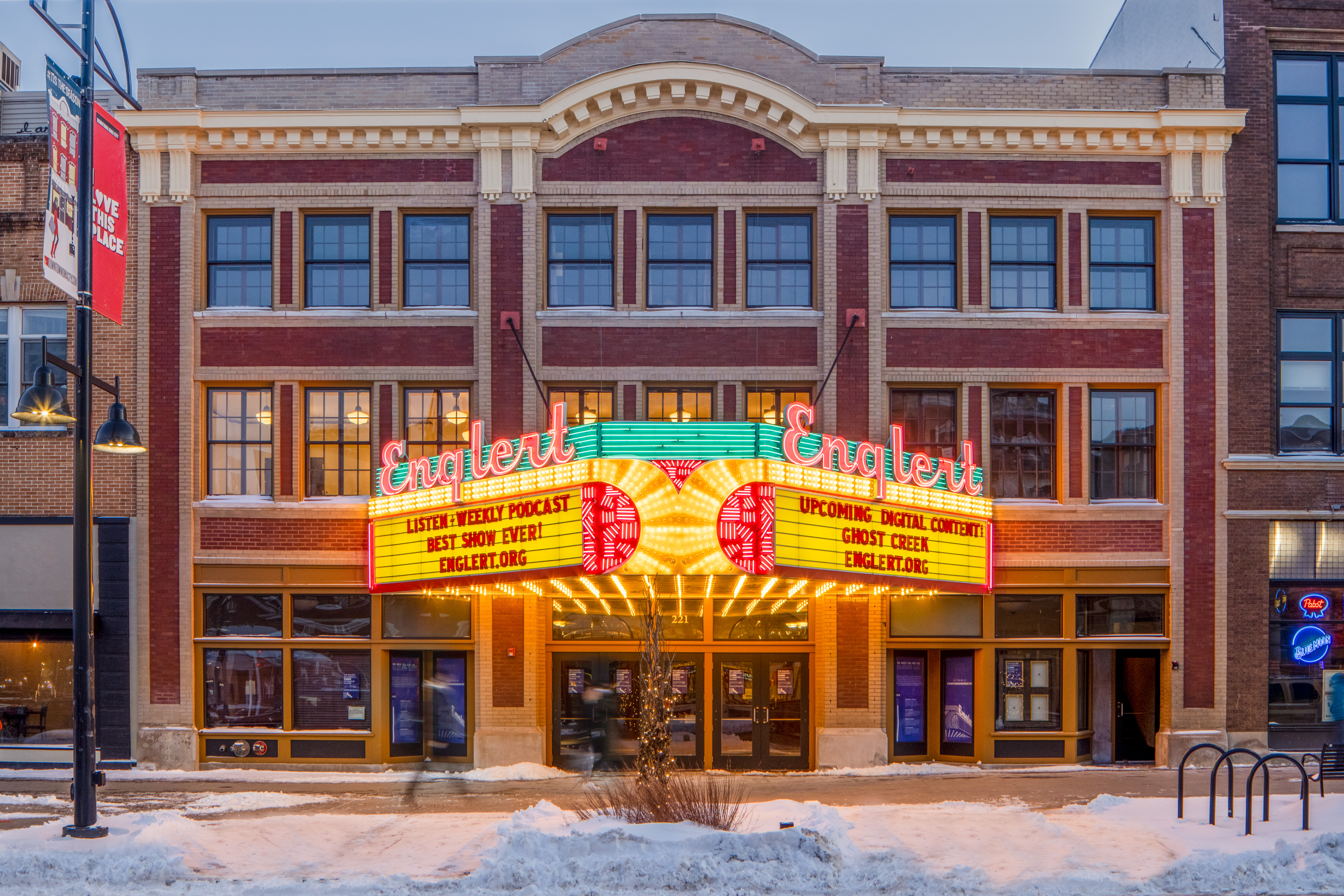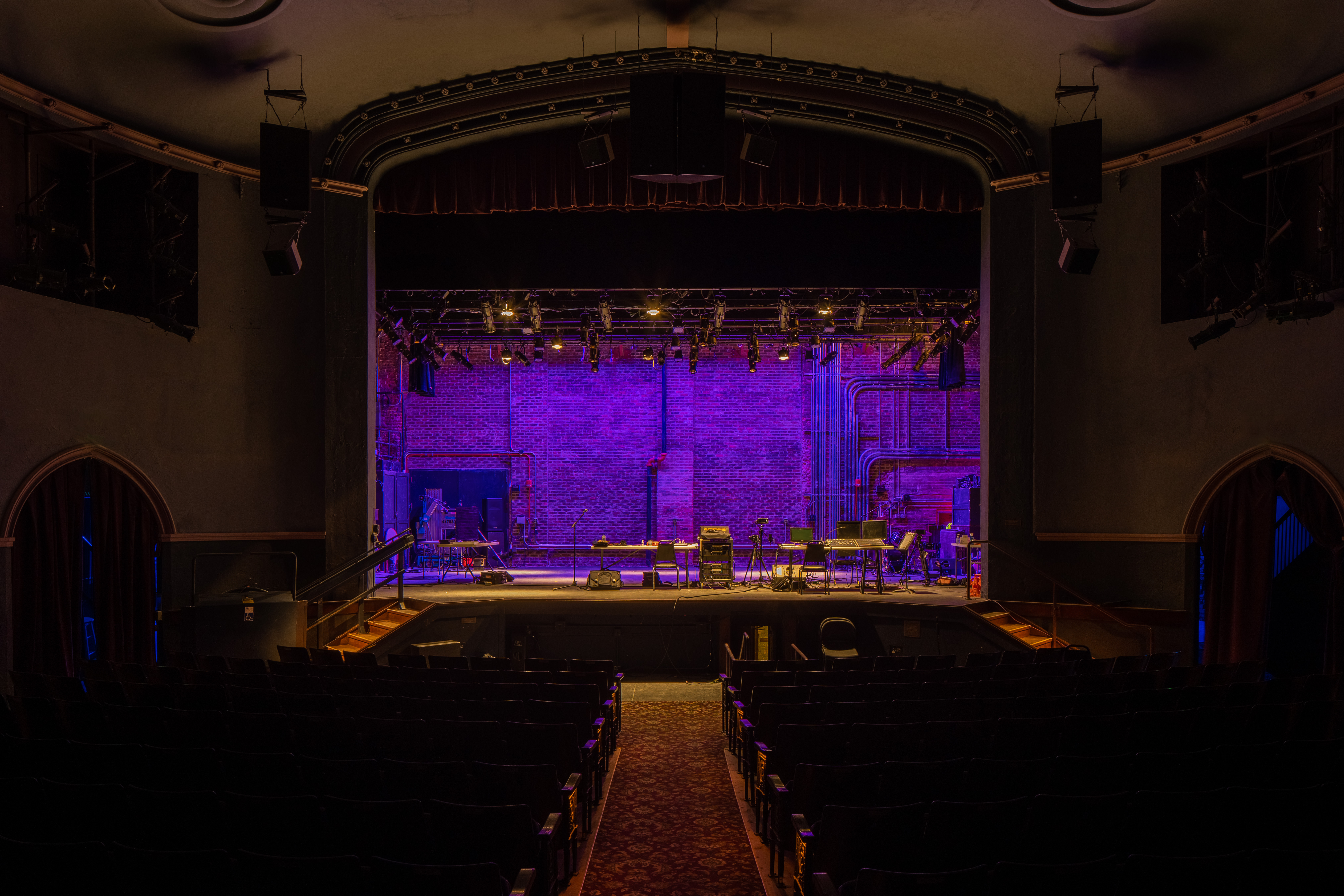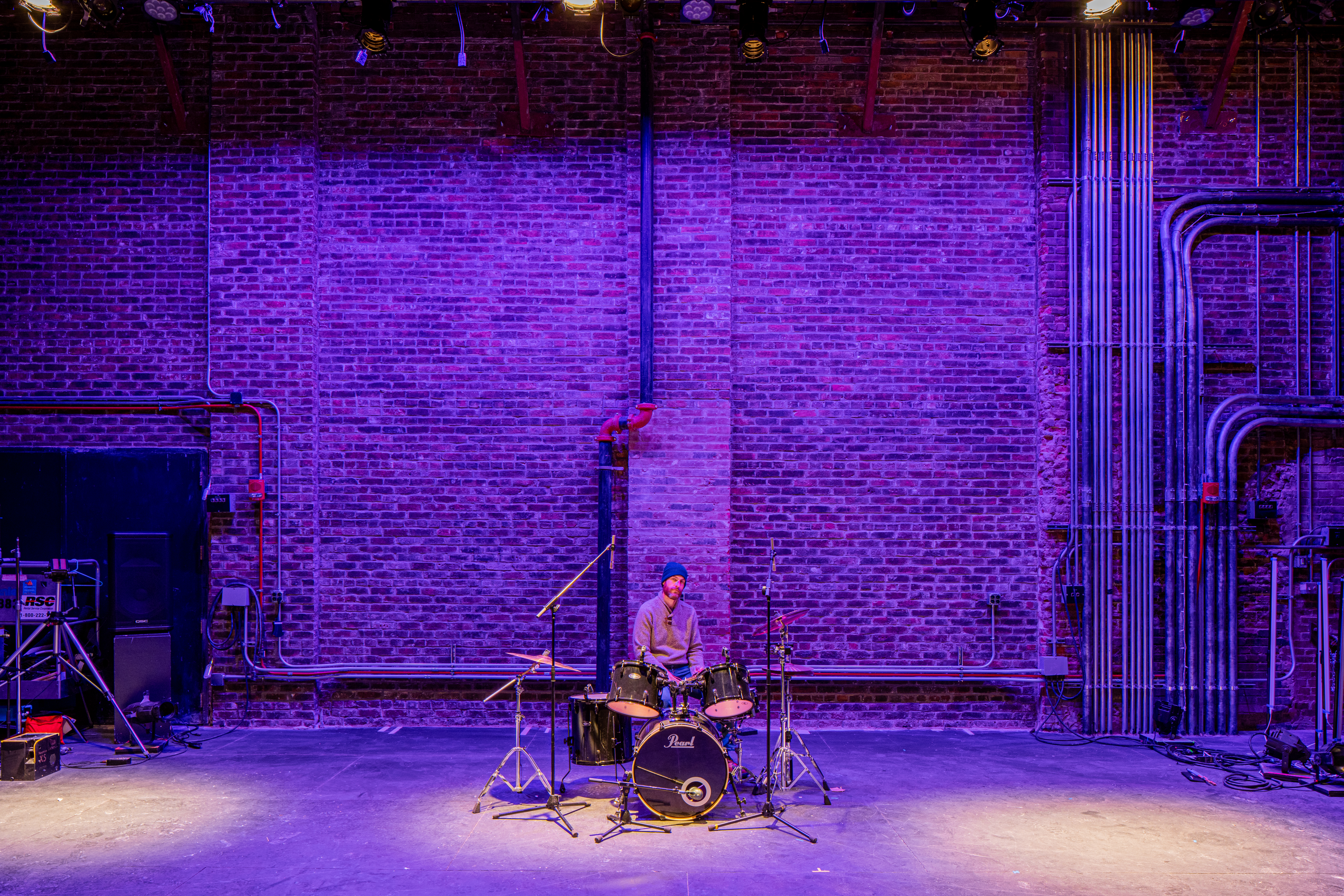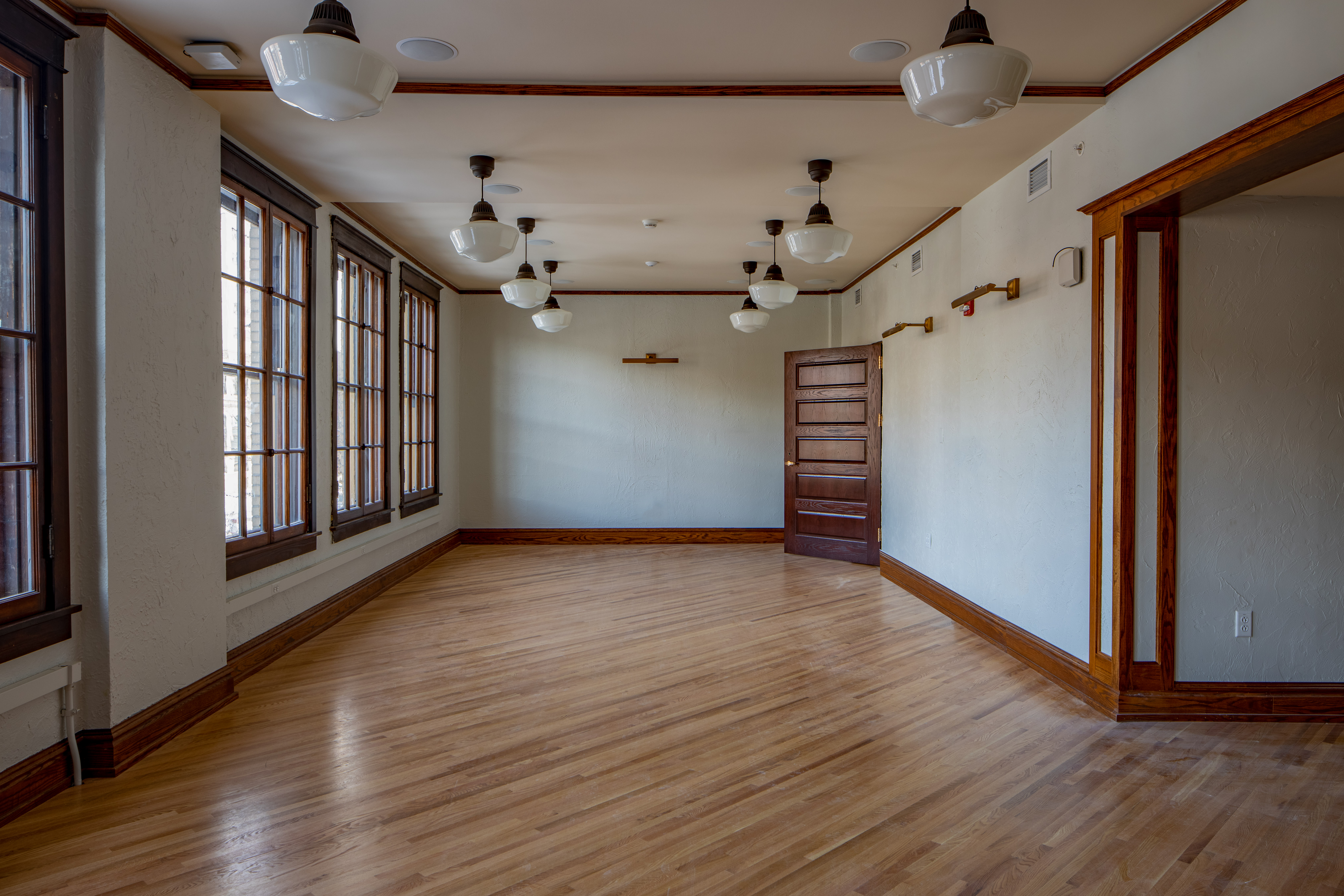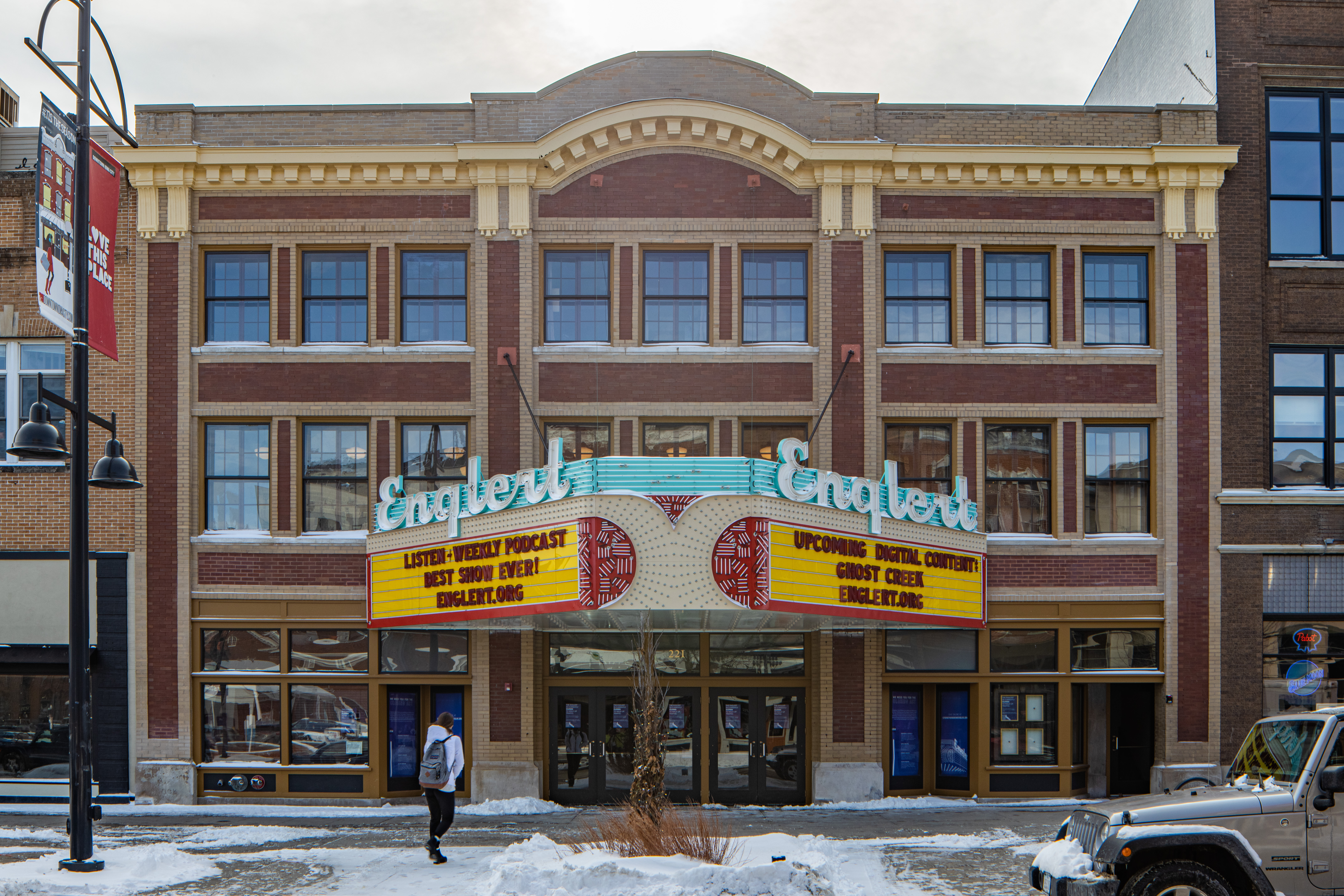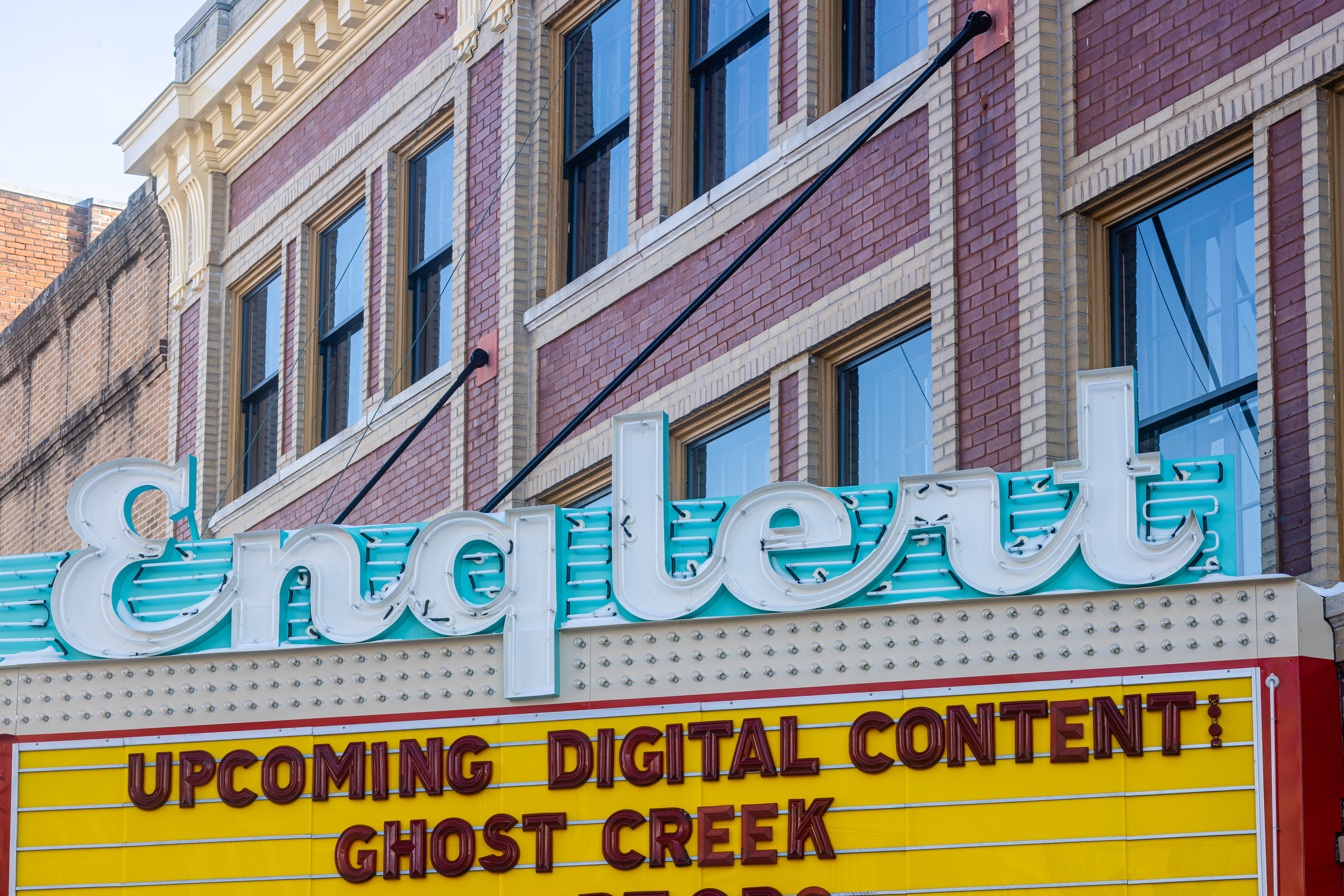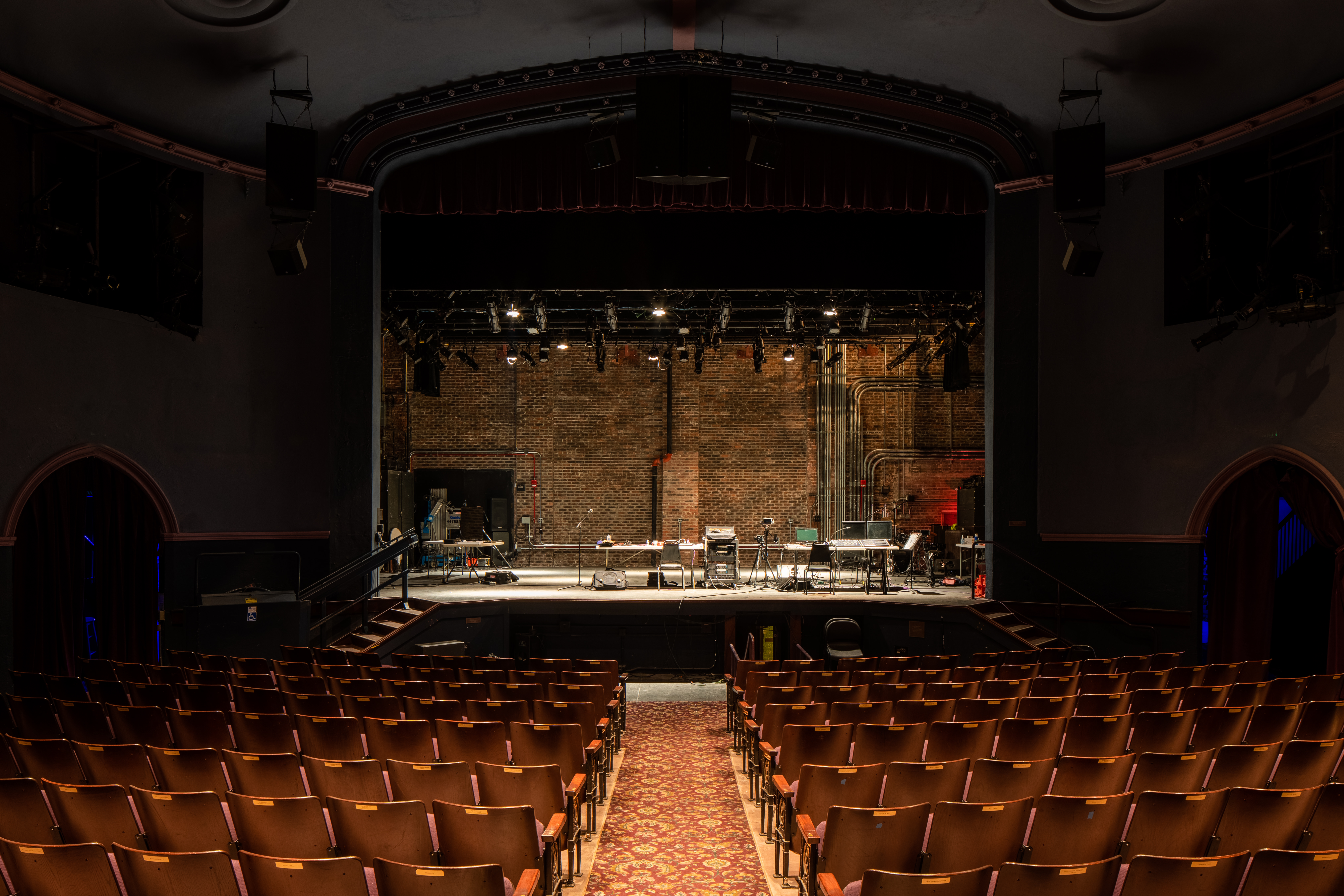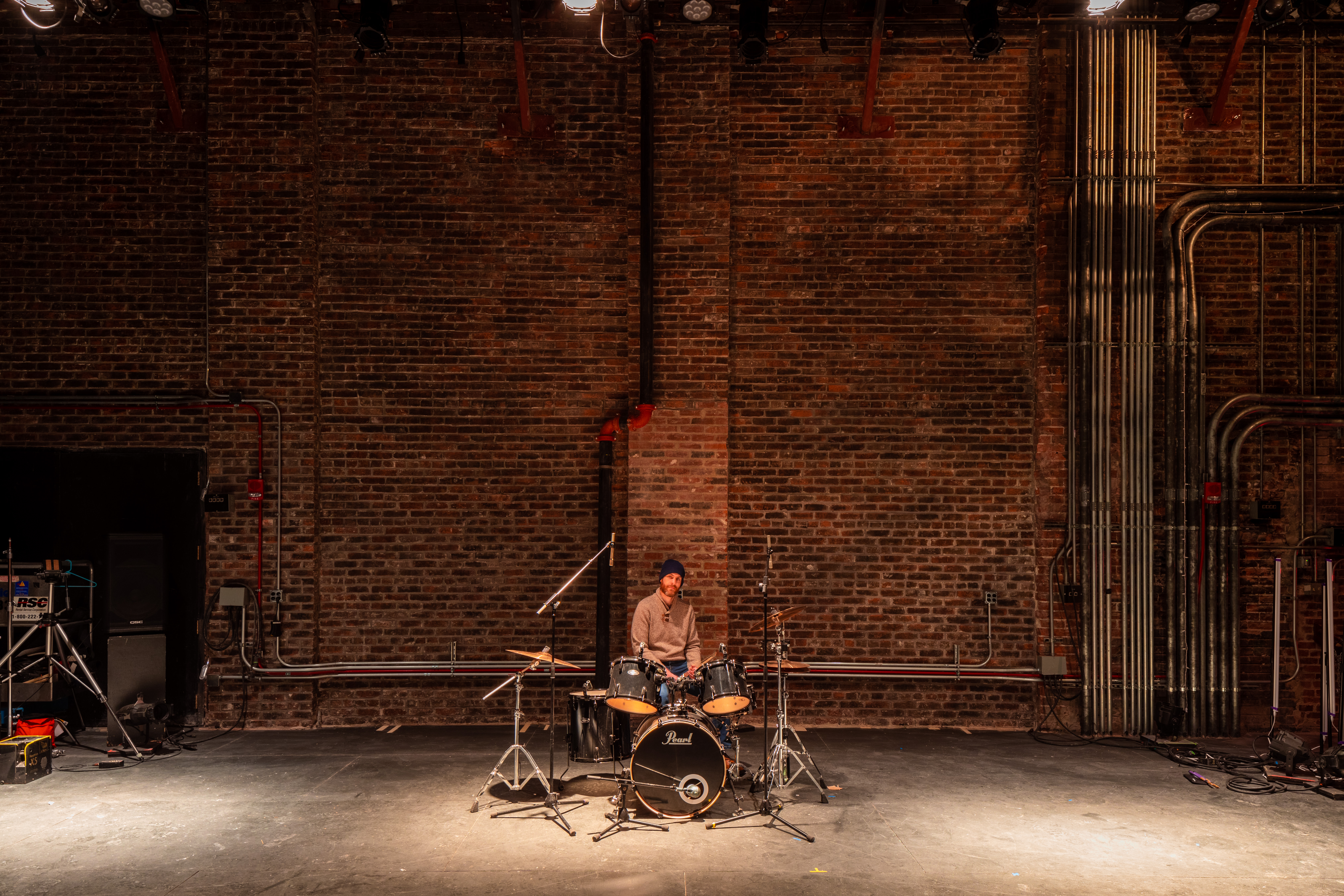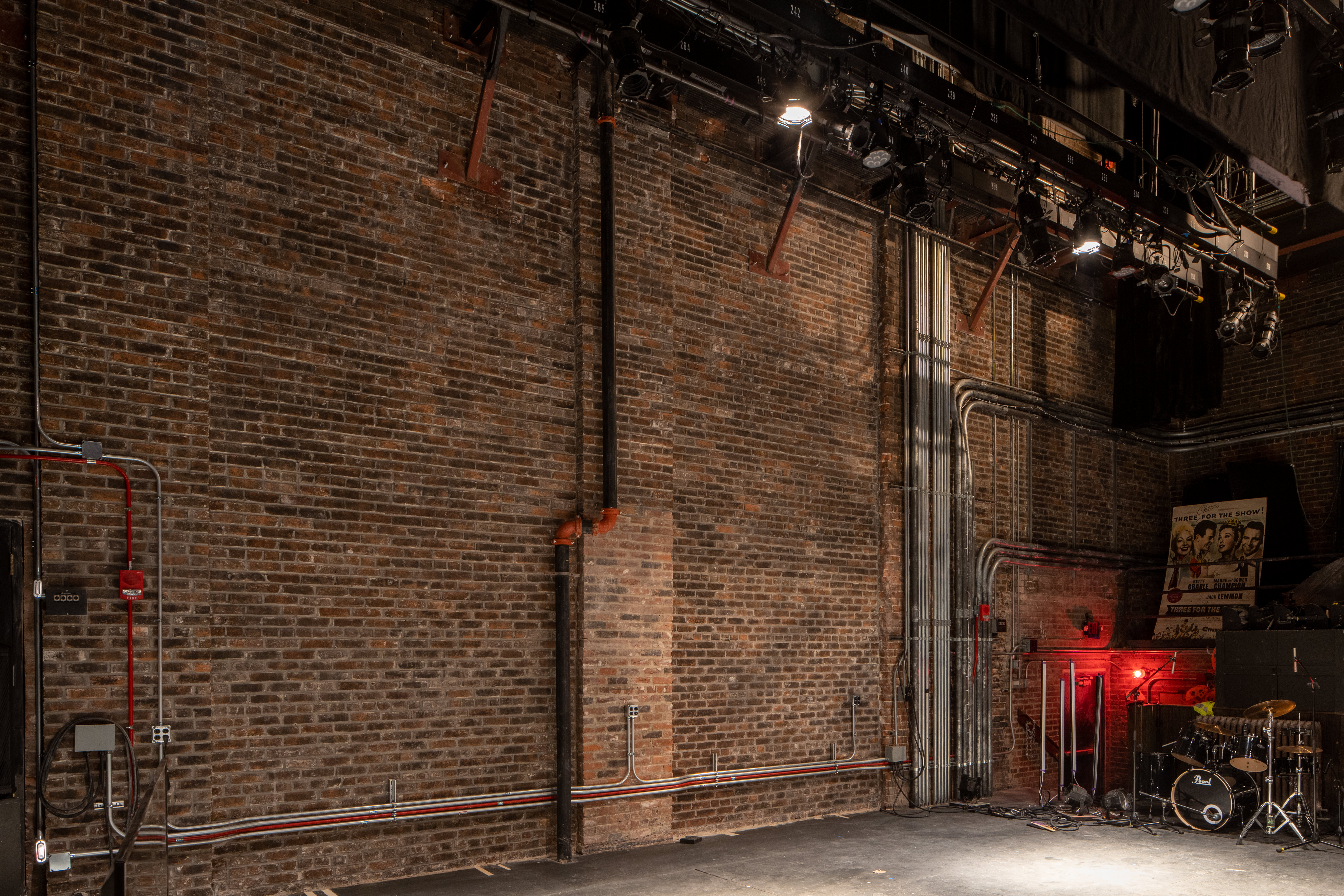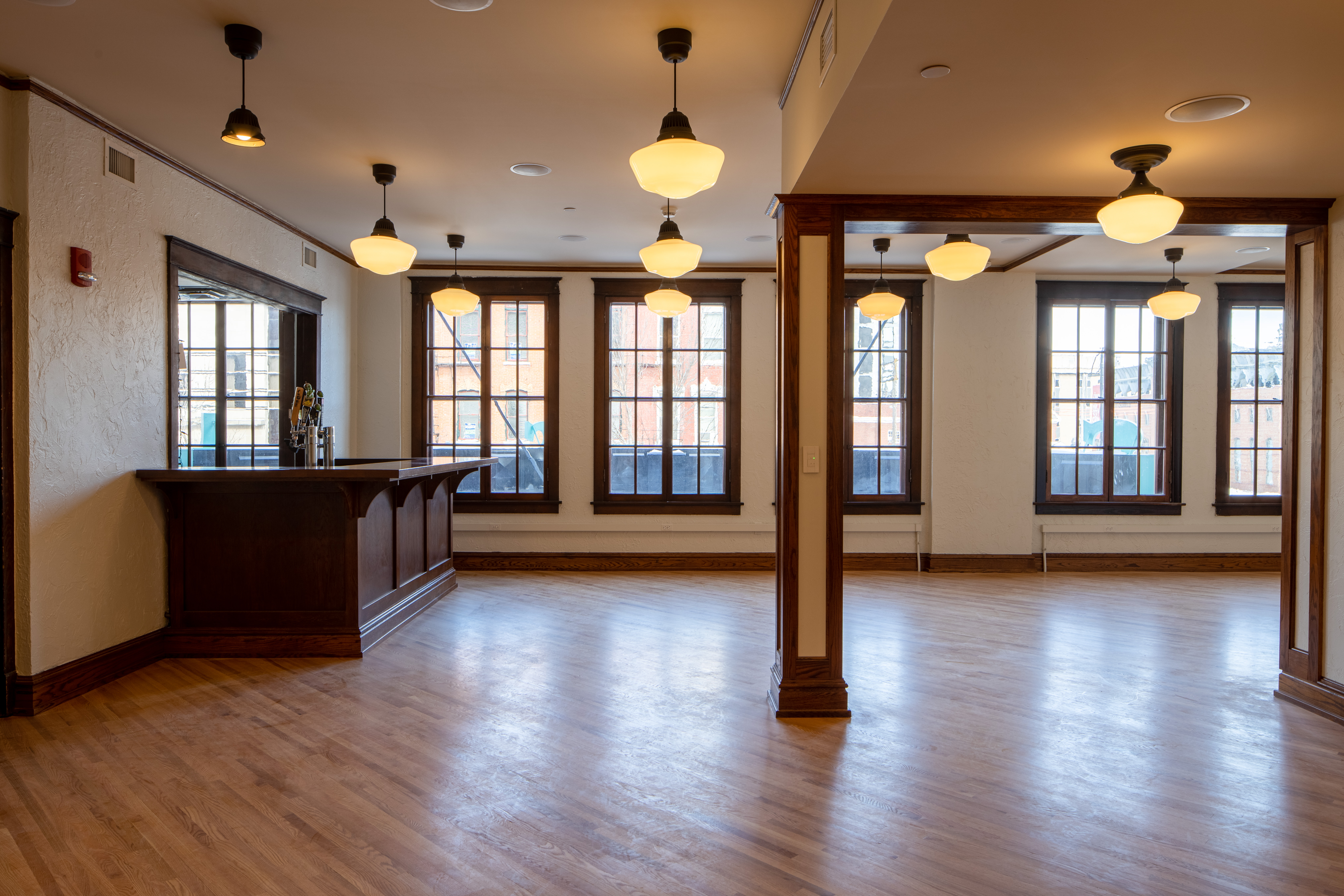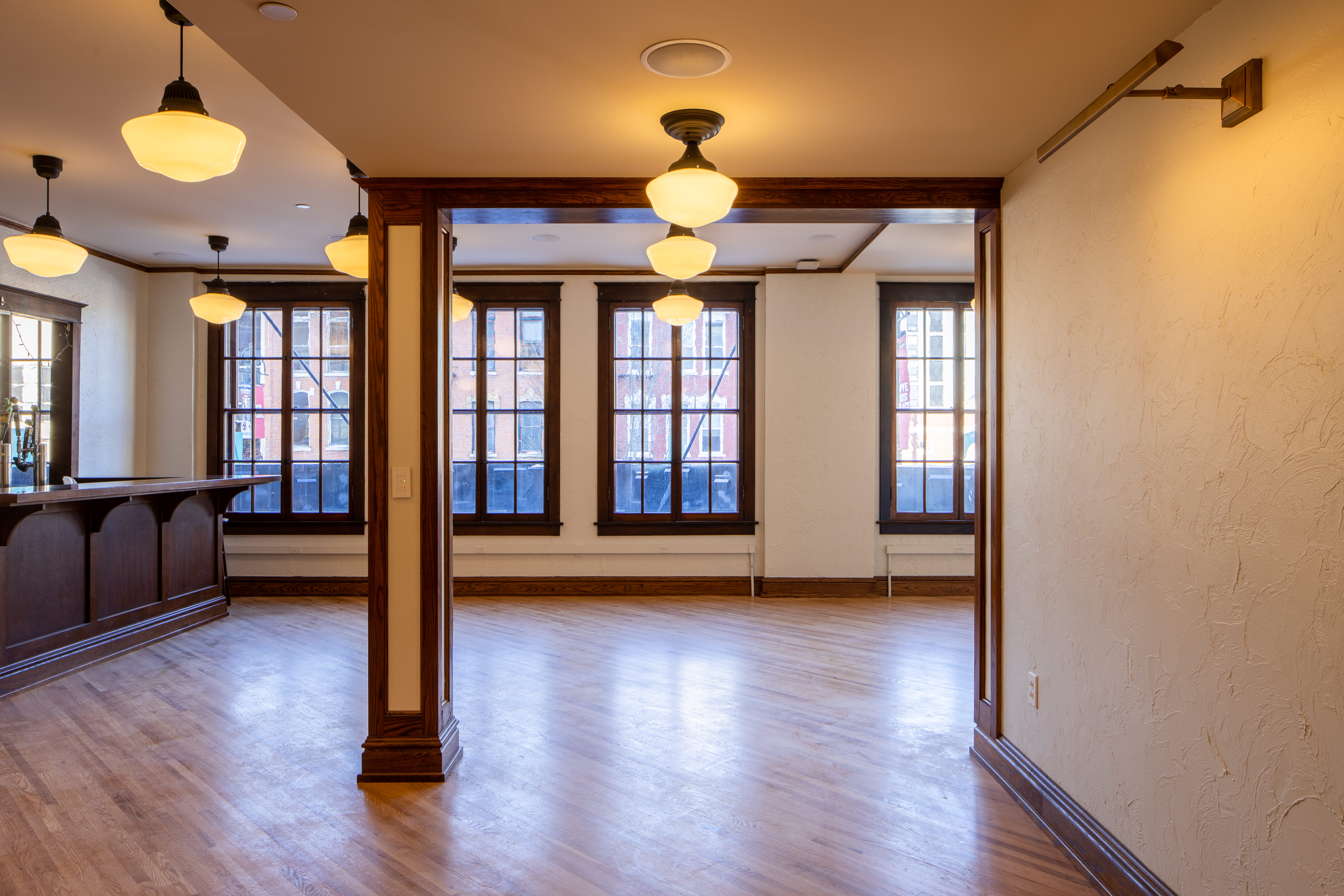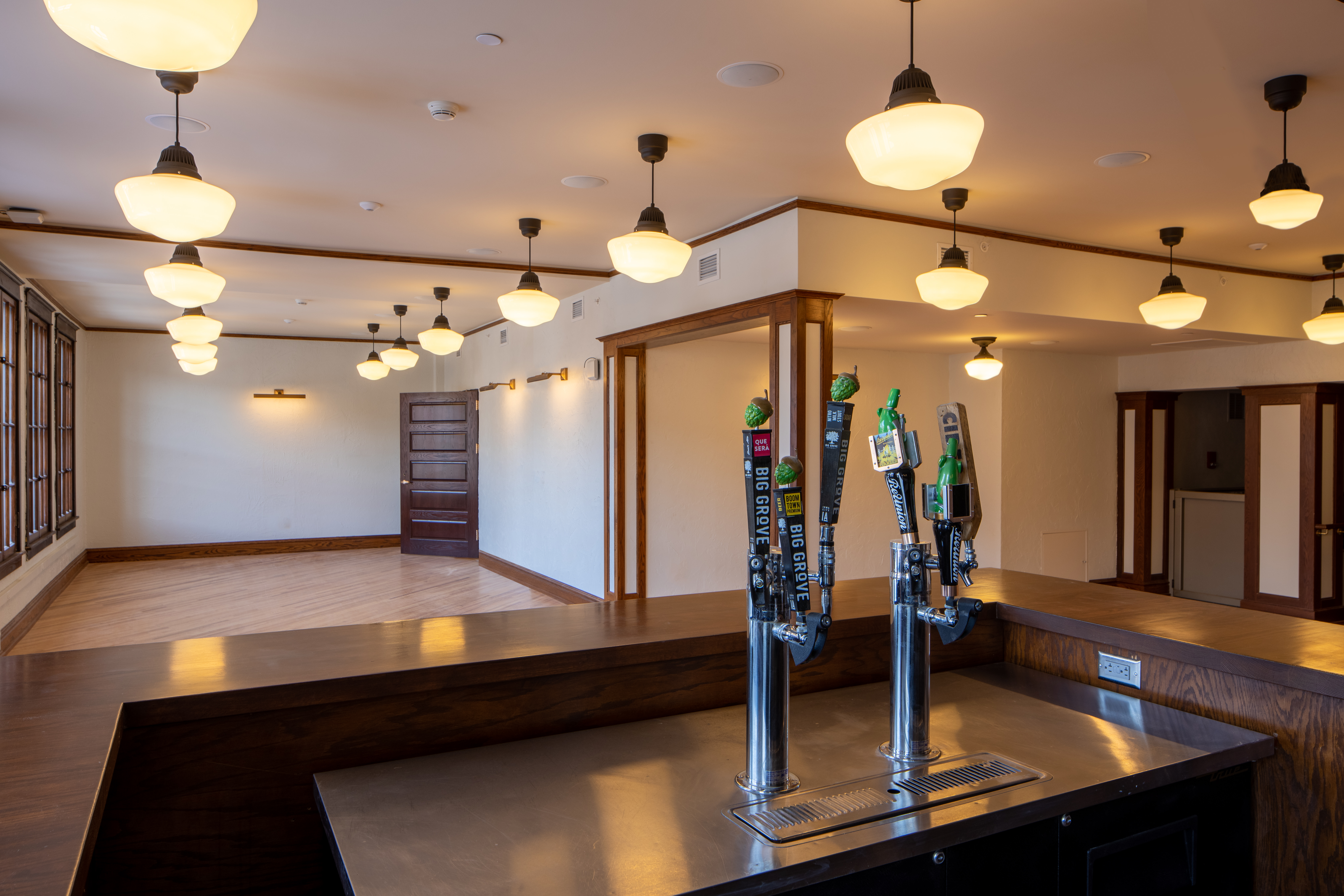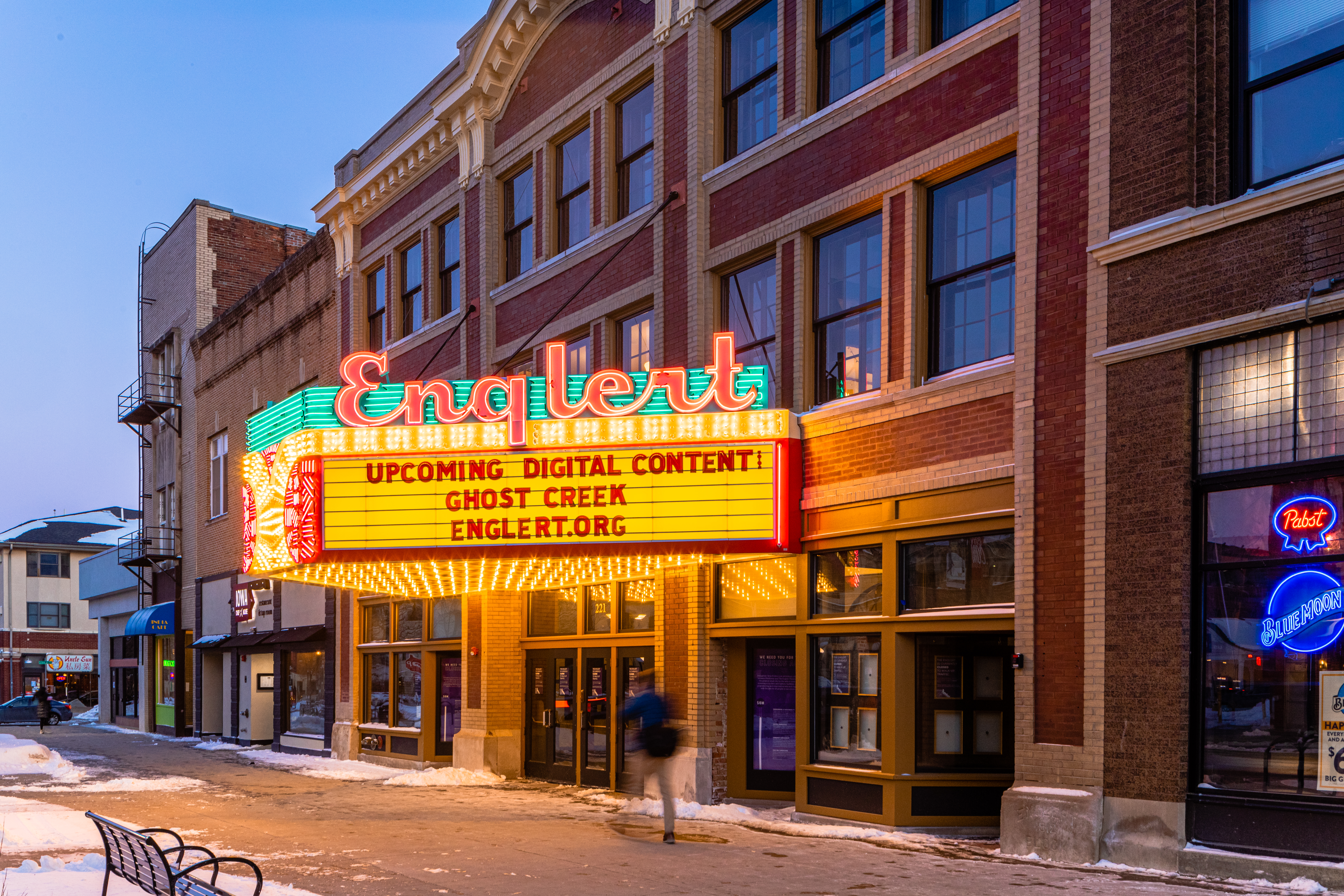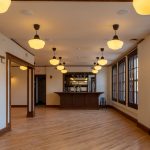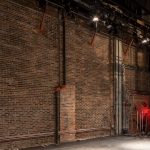Englert Theatre
Innovation in preservation.
Opened as a vaudeville playhouse in 1912, The Englert Theatre is an iconic treasure in Iowa City’s downtown cultural and physical landscape. Nearly destroyed by a fire in 1926 and brought back from the brink after a closure in the late 1990s, the theatre has been a full-time performing arts venue since 2004.
After more than 20 years as a leader in the Midwestern art scene, the wear and tear of time coupled with heavy scheduling, warranted further investment in a restoration and rehabilitation of the local historic landmark, listed building on the National Register of Historic Places and identified as a National Treasure by the National Trust.
“It’s all about keeping a really important physical and programmatic asset in our community. It’s about the people who live here. It’s about the performers and the great thinkers who we welcome to this town, and it’s about this building that tells the history of Iowa City and who we are.”
– Andre Perry, Executive Director, Englert Theatre
OPN Architects worked with the Englert to develop a wish-list of improvements and a thoughtful plan to fundraise and execute those plans. The first phase of the multi-phase project focused heavily on shoring up the historic building’s walls, floors, and roof, including substantial structural repairs. Additionally, the first phase included restoration of the iconic marquee and expansion of the second-floor gallery space.
TAKE A TOUR
For a full-screen and more mobile-friendly view, click here.
FACELIFT
The first phase of the restoration includes extensive building facade maintenance with a particular emphasis on the restoration of the iconic marquee, rehabilitation of the brickwork, and rehabilitated windows. Much of the work, even though it is in plain sight on the front facade, may not be obvious from street level. These birds-eye views show the transformation:
Photo Gallery
REMARKABLE MARQUEE
When the Englert asked OPN to investigate marquee restoration, the paint was peeling, neon lights were broken, the incandescent “chaser” lights did not move, and the soffit lights were not operational. Internally, the steel structure that supported the Marquee was rusted and the electrical infrastructure that powered the sign did not meet any modern electrical safety requirements. The marquee not only looked bad, but it was also dangerous.
The marquee cladding—called cabinets– were removed, disassembled, and shipped to a contractor specializing in marquee restoration. The many layers of paint were removed to expose the original colors—colors that were slighting different than the most recent color scheme. The steel superstructure was repaired, and irreparably corroded pieces were replaced. Energy-saving LED lighting replaced incandescent bulbs and fluorescent tubes. Neon—an energy efficient light source– was replaced in-kind to retain authenticity.
Watch the marquee’s careful removal and sparkling debut:
ROOM WITH A VIEW
When the Englert was constructed, the area above the lobby was apartments. Decades ago, the apartments were removed, and a social space called the Gallery was added. The multi-purpose social room was used as an art gallery, concession stand, bar, and community gathering space. While useful to the Englert, it was too small and oddly shaped with limited windows and a closet in the middle of the room.
OPN worked with the Englert to expand the Gallery, more than doubling its size. Major structural upgrades were required to make the space safe and substantial alterations to heating and cooling duct work were needed to make the open. Fire sprinklers were added to improve its safety and a new sound system was installed to increase the versatility of the space.
The new space will be a multi-purpose space and will be used for performances, receptions, intermission concessions, and a community gathering space. The new space will provide a new source of revenue to the theater and increase the programming capacity of the organization.
BEHIND THE CURTAIN
In 1926 the Englert Theater suffered a catastrophic fire. Historic photographs show the Iowa City Fire Department attempting to extinguish the fire, but the fire spread throughout the building destroying much of the building. The theater was quickly rebuilt but the exterior brick walls—including the stage wall where the fire started—was reused as–is. It’s likely that the shock of red-hot bricks being rapidly cooled by fire-fighting water caused the bricks on the stage wall to spall and crack. To most Englert patrons, the rough and charred stage wall that featured signatures from artists who performed on stage was its hallmark.
In the recent past, the Englert staff began noticing large pieces of brick falling from the stage wall onto the stage. When OPN studied the wall, it became evident that the inner layer of brick was completely detached from the rest of the brick wall and collapse was possible. Additionally, the catwalk used for theatrical production was attached to the failing wall. During demolition, much of inner row of bricks fell with little or no effort, proving the wall was unsafe and collapse was imminent.
New bricks with a rough texture and charred appearance were made to match the damaged historic bricks. The bricks were laid to match the historic coursing and mortar was tinted, as if it had been charred. A masonry pier featuring artist signatures was retained.
Other less visible, but critical improvements include replacement of the roof, replacement of some heat and cooling equipment, as well as the rear (alley) wall of the stage, which was crumbling, was repaired and rebuilt.
The rehabilitation, restoration, and revitalization of the Englert Theatre will be a multi-phase project. The first phase of the multi-phase project focused heavily on shoring up the historic building’s walls, floors, and roof, including substantial structural repairs. Additionally, the first phase included restoration of the iconic marquee and expansion of the second-floor gallery space. OPN worked with the Englert to set priorities and focus on investments that both addressed the greatest needs and maximized the use of grants, public funding, and historic tax credits. The second phase will focus on enhancing the patron experience with better sound, better lighting, and historically appropriate upgrades to the main hall.
